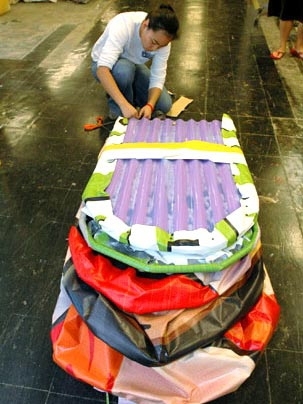You'd be surprised what students can make out of stuff other people throw away.
Eighteen architecture majors, most of them juniors, were assigned the task this fall of designing and building one-person homeless shelters from recycled materials found in and around MIT and Cambridge.
Working in teams of four or five, the students had five days to design and build their shelters, each team working with a budget of $50. An important aspect of the project was to orient students to the need for social architecture -- architecture that is meant to redress social problems -- and to make them aware of how much useful material we throw away. Ultimately, the shelters were to aspire to the quality of a quilt -- something artful and useful made from recycled materials.
The project was an assignment in a level-one studio -- for most, their first design studio -- taught by Professor Jan Wampler and lecturer Alan Joslin, both in the Department of Architecture. The emphasis of the studio is on building "in the landscape" so as not to intrude too much on surroundings.
Shelters had to be unobtrusive and portable; fit into a shopping cart or roll on wheels; keep out the elements; and provide some warmth in winter and ventilation in the summer.
Students built the shelters with the help of Technical Instructor Chris Dewart.
A version of this article appeared in MIT Tech Talk on October 5, 2005 (download PDF).








